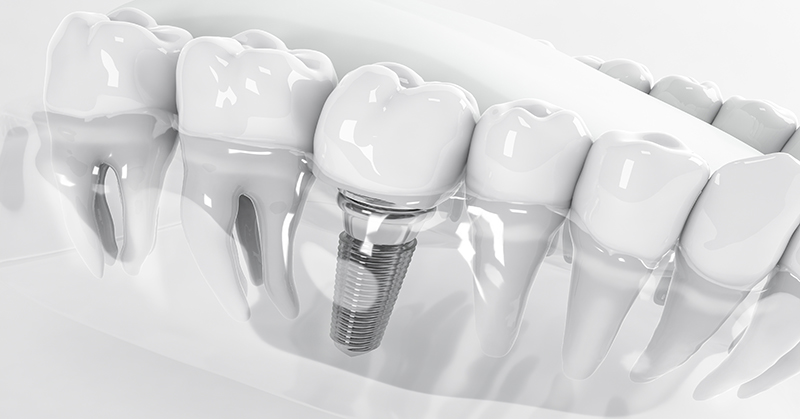Does Medicare Cover Dental Implants in 2024?
Medicare is an essential service for seniors, covering critical aspects of healthcare such as hospital stays, hospice care, and doctor services. However, when it comes to dental implants, a procedure known for its high costs, many beneficiaries find themselves questioning their coverage options. If you're contemplating this procedure, it's vital to know whether your plan offers coverage. This article aims to shed light on the coverage of dental implants under Medicare, focusing on Medicare Advantage plans.Why Are Implants So Expensive?
updated on November 15, 2023
According to recent statistics, tooth loss is a prevalent issue, especially among older individuals. Adults between the ages of 20 to 64 have an average of 25.5 remaining teeth. However, factors such as age, smoking, lower income, and education level can contribute to a higher likelihood of tooth loss. In this article, we will explore dental implants in detail through the following aspects:
-
How much do dental implants may cost?
-
Why are implants so expensive?
-
Other alternatives to dental implants
-
How Much Do Dental Implants May Cost?
Dental implant costs vary depending on several factors, including the location of the dental practice, the type of implant used, the number of implants required, and any additional procedures such as bone grafting or sinus lifts. On average, the cost of a single dental implant can range from $3,000 to $6,000 or more. However, it's important to note that these figures are approximate, and the actual cost may differ based on individual circumstances.
The Reasons Behind the High Implant Costs
-
Specialized Expertise: Dental implant placement requires extensive training, skill, and knowledge. Dentists who perform implant surgeries undergo specialized education and training to ensure successful outcomes. The expertise and experience of the dental professional contribute to the cost of dental implant procedures.
-
Quality Materials: Dental implants are typically made of high-quality materials such as titanium. These materials are biocompatible and offer durability and longevity. The cost of these materials, along with their manufacturing and quality assurance processes, adds to the overall expense of dental implants.
-
Advanced Technology: Dental implant procedures utilize advanced technology and equipment, including digital imaging, 3D printing, and computer-guided implant surgery. These technological advancements improve accuracy, precision, and the success rate of dental implant procedures. However, the investment in these advanced technologies increases the cost of dental implant treatments.
-
Customization and Personalization: Each dental implant case is unique, and thorough planning is required to ensure proper alignment, fit, and aesthetics. Customized abutments, crowns, and prosthetics are created to match the patient's natural teeth, resulting in a seamless smile. The customization process, including laboratory fees and the expertise of dental technicians, adds to the overall cost of dental implants.
-
Post-Surgical Care and Follow-Up: Dental implant surgeries require post-operative care, including regular check-ups, follow-up visits, and maintenance. These additional visits and services contribute to the overall cost of dental implant treatments.
-
Other Alternatives to Dental Implants
While dental implants are considered the gold standard for tooth replacement, there are alternative options available, depending on the patient's specific needs and preferences. Some alternatives to dental implants include:
-
Dental Bridges: Dental bridges are artificial teeth anchored by adjacent natural teeth. They can be a more cost-effective option compared to dental implants. However, they may require modification of adjacent healthy teeth and may not offer the same long-term durability as dental implants.
-
Dentures: Dentures are removable prosthesis that replace missing teeth. They can be a more affordable option, especially for individuals with multiple missing teeth. However, dentures may require regular adjustments and may impact speech and eating efficiency.
-
Dental Veneers: Dental veneers are thin shells made of porcelain or composite resin that are bonded to the front surface of the teeth. While veneers can improve the appearance of damaged or discolored teeth, they do not replace missing teeth and are not suitable for individuals with extensive tooth loss.
-
Removable Partial Dentures: Removable partial dentures are used when some natural teeth remain. They consist of replacement teeth attached to a pink or gum-colored plastic base. While they offer a more affordable option, they may be less stable and require regular maintenance.
-
Orthodontic Treatment: In some cases, orthodontic treatment such as braces or aligners may be an alternative to dental implants. By aligning the existing teeth, orthodontic treatment can improve the appearance and functionality of the smile. However, this option is not suitable for individuals with extensive tooth loss.
It is important to consult with a dental professional to determine the most appropriate tooth replacement option based on individual needs and oral health conditions.
-
Conclusion
Dental implants are considered a highly effective and long-lasting solution for tooth replacement. The cost of dental implants can vary depending on various factors, including the expertise of the dental professional, the quality of materials used, and the advanced technology employed. Despite being more expensive than other alternatives, dental implants offer numerous advantages, including durability, functionality, and natural aesthetics. However, it is essential to explore alternative options based on individual circumstances and consult with a dental professional to make an informed decision regarding tooth replacement.

free&low-cost dental clinics
View Now
dental health

Dental Implants

Dental Implants
What Are the Possible Risk Or Side Effects for Dental Implants?
Dental implants provide an excellent way to replace missing teeth and restore your smile. But as with any medical procedure, there are possible risks and side effects to consider before undergoing implant surgery. In this article, we aim to provide a comprehensive overview of dental implants - what they are, who is a suitable candidate, and most importantly, the potential risks and complications that can arise. By understanding both the benefits and possible downsides of implants, you can make a fully informed decision about whether they are the right choice for your individual needs and health profile.
Dental Implants
Will Your Insurance Cover Dental Implants?
Dental implants are growing in popularity, with over 3 million Americans choosing them to replace missing teeth. While implants fuse securely into the jawbone providing natural-looking and long-lasting tooth replacements, the process does come with a hefty price tag. On average, a single implant can cost $1,600-$2,200 out of pocket. For patients needing multiple implants or other restorative work, these expenses quickly add up.
Dental Implants
How Can I Get Government Grants for Dental Implants?
Dental implants are a sought-after solution for missing teeth, offering a long-term fix that can significantly improve quality of life. However, the cost of dental implants can be prohibitive for many. Understanding government programs and other grants available for dental care, particularly dental implants, can help bridge this financial gap. In this guide, we will walk you through some government assistance and grant programs aimed at making dental implants more accessible.
Dental Implants
How to get free dental implants?
When it comes to dental implants, the cost can sometimes make you clench your teeth harder than the cold does. But fear not! There are a plethora of avenues to explore for low-cost or even free dental care. From state and local resources to dental schools and community health centers, let’s dive into where you can find that much-needed dental implants without breaking the bank.
Dental Implants
Why Are Implants So Expensive?
According to recent statistics, tooth loss is a prevalent issue, especially among older individuals. Adults between the ages of 20 to 64 have an average of 25.5 remaining teeth. However, factors such as age, smoking, lower income, and education level can contribute to a higher likelihood of tooth loss. In this article, we will explore dental implants in detail through the following aspects:







